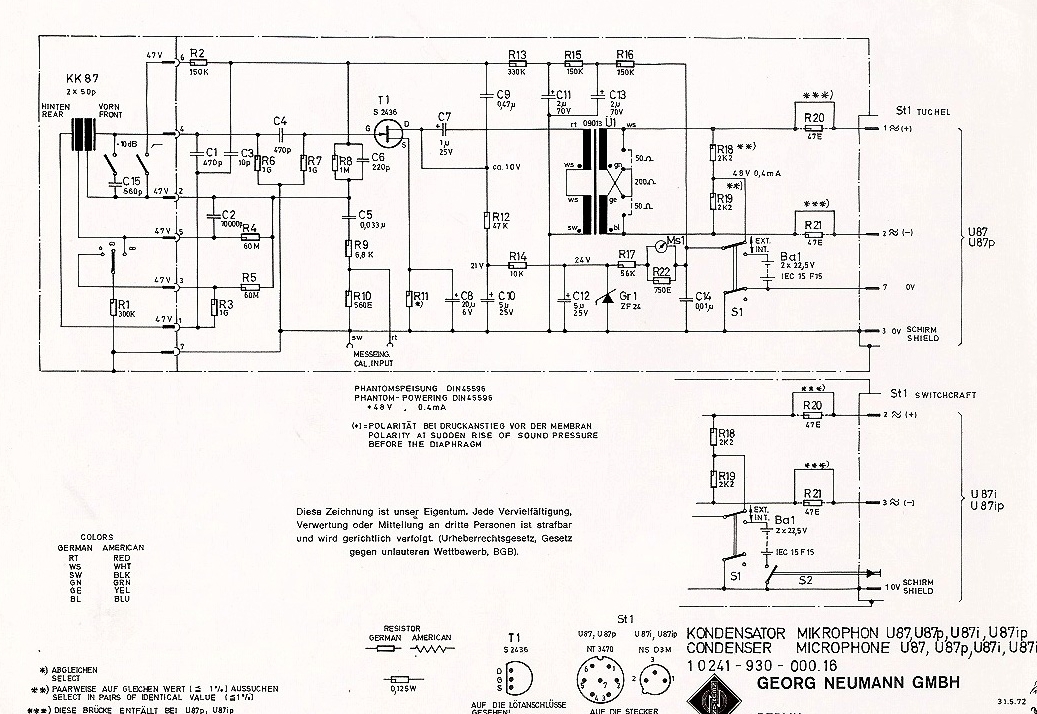- Joined
- Jul 15, 2009
- Messages
- 2,312
Matador said:kante1603 said:So what went wrong in your build chuck?
Curious now,
best regards,
Udo.
Oh wait - Chuck may be referring to a retrofit of the original U87 - I designed this to retrofit Dany's U87 large format design, which uses a 24V Zener voltage to regulate the JFET operating point. The original Neumann uses a 33V Zener after a large dropping resistor. If you tried to draw this 4mA current through a stock Neumann design, the Zener voltage would collapse and the operating point of the JFET may no longer be valid.
However with Dany's stock design it's no problem, as essentially the draw from the LM5002 is diverted away from the Zener diode which is sinking a lot of current to ground to hold the internal rail at 24V anyways (probably even more than chip does in any case).
If anyone wants to try and retrofit an original Neumann, it requires a few more circuit changes (which I wouldn't recommend doing to preserve the value). But if anyone is curious I can explain it in concept.
The original Neumann uses a 33V Zener after a large dropping resistor
In Fact that would not be correct, Earlier design of the Neumann U87i version 16 (70's) used a 24V Zener Regulation, it is only later in the 80's that Neumann started using the 33V Zener in revision 21 and above. The D-87 is based on the earlier version of the U87i with 24V zener.
see here ,
Best,
Dan,





![Soldering Iron Kit, 120W LED Digital Advanced Solder Iron Soldering Gun kit, 110V Welding Tools, Smart Temperature Control [356℉-932℉], Extra 5pcs Tips, Auto Sleep, Temp Calibration, Orange](https://m.media-amazon.com/images/I/51sFKu9SdeL._SL500_.jpg)





























